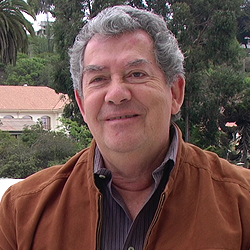Al cumplirse dos años del mandato de la Presidenta Bachelet, justo en la mitad del camino, hay motivos para sentirse desorientado. No puedo dejar de recordar los versos iniciales del Canto 1 del Infierno: “A mitad del camino de la vida, en una selva oscura me encontraba porque mi ruta había extraviado”.
Los medios de prensa, la radio y la TV dan cuenta de esa confusión y la multiplican. Véase, por ejemplo, la siguiente selección de titulares publicados durante los últimos días:
- Balance de gobierno: “hemos convertido promesas en realidades”
- Bachelet busca recobrar la popularidad perdida
- Segundo año de mandato de Bachelet en Chile sin festejos
- Bachelet, dos años de reformas y escándalos
- Bachelet llega a la mitad de su segundo mandato con uno de sus índices más bajos de aprobación
- Fundación Ciudadano Inteligente: Cumplimiento del programa llega a 25%
- Oposición chilena descalifica primeros 2 años de presidenta Bachelet
- Bachelet defiende logros de su mandato: Algunos interesadamente no quieren que se conozcan
- Michelle Bachelet, en busca de la popularidad perdida
La pauta del gobierno durante esos días para inclinar la balanza de esos ambiguos balances en su favor, aparece claramente manifestada en las siguientes muestras tomadas verbatim de algunos de los medios informativos.
Primer caso. Desde la región de Antofagasta, la Presidenta Michelle Bachelet realizó un balance de la mitad de su mandato, donde –según ella– desde el gobierno se ha puesto “fuerza y corazón, no sin dificultades”. Bachelet indicó que “es comprensible que algunos logros de estos dos años se desconozcan, porque han sido muchos, la lista es larga. Vamos a trabajar para comunicar… pero tengo que decir que hay algunos que no quieren que se sepan”.
Segundo caso. La Mandataria destacó también la aprobación de reformas clave como la tributaria y educacional. “Ha valido la pena cada reforma que hemos estado dando. Porque la gente me lo dice… hay pájaros de mal agüero, pero nosotros tenemos confianza que vamos a cumplir”, enfatizó. “Nadie dijo que iba a ser fácil, nadie dijo que iba a ser miel sobre hojuelas. Pero vamos a seguir cumpliendo lo que Chile nos ha demandado. Hay cosas que hay que perfeccionar, pero en eso estamos trabajando”, dijo.
Tercer caso. El ministro vocero de La Moneda, Marcelo Díaz, resaltó los compromisos cumplidos de la administración como la reforma tributaria y la gratuidad en la educación. “Los compromisos están cambiando significativamente la vida de los chilenos. Es un gobierno que es capaz de impulsar transformaciones que prometimos a los chilenos y que por lo tanto esas promesas hoy día se están convirtiendo en realidad”, señaló. En esta línea, el secretario de Estado sostuvo que “el balance para nosotros está marcado con esta frase: hemos convertido promesas en realidades”.
Cuarto caso. Desde la sala de Prensa del Palacio de La Moneda, el vocero de Gobierno, Marcelo Díaz, realiza balance al cumplirse dos años del período de la Presidenta Michelle Bachelet. “[…] Estamos iniciando el tercer año de gobierno y quiero muy brevemente decirles que la mejor forma que tenemos de conmemorarlo es trabajando con mucho compromiso, consolidando lo que hemos hecho y avanzando en lo que falta por hacer”.
II
Tanta insistencia en logros, consolidación y su proyección, así como en el compromiso de cumplir lo que falta, chocan con las percepciones que transmite la opinión pública encuestada.
La más reciente encuesta CADEM, dada a conocer el lunes 13 de marzo, revela que la aprobación presidencial (“Independientemente de su posición política, ¿usted aprueba o desaprueba la forma como Michelle Bachelet está conduciendo su gobierno?”) que al inicio, el 13 de marzo de 2014 era 52% por la aprobación y 20% por la desaprobación, evolucionó a 33% y 58% respectivamente un año más tarde y ahora es de 23% aprueba versos 68% desaprueba. Esto es, una caída libre por la pendiente de la opinión pública encuestada, para terminar a mitad del camino con dos tercios del lado negativo y menos de un cuarto positivo.
La desaprobación del gabinete presidencial alcanzó a un 71% por ciento al final de la semana pasada, casi tan alta como la manifestada frente al anterior gabinete (de Peñailillo y Arenas) la semana anterior a su fin en mayo pasado.
La percepción de las reformas –que el gobierno autoevalúa tan positivamente– es de escaso entusiasmo entre la población encuestada. Están de acuerdo con la reforma tributaria un 24%, con la reforma educacional un 45% y con la reforma laboral un 24%. La lectura de otras encuestas distintas de la CADEM, revela que la percepción negativa se extiende a otras áreas claves de la gestión gubernamental como seguridad, salud, transporte y, en general, al comportamiento de las personas y las instituciones directivas del Estado y la sociedad, con pocas excepciones.
Preguntadas las personas si considerando todos los aspectos políticos, económicos y sociales creen que el país va por un buen camino o por un mal camino, la caída libre en el tiempo es aún más llamativa. En marzo de 2014, 78% respondía por buen camino y apenas 14% por mal camino, confirmando las ilusiones y expectativas que acompañaron a la elección de la actual Presidenta. Un año más tarde, las cifras correspondientes eran 39% y 47%. Y en marzo de 2016, la ecuación es 21% por buen camino y 64% por mal camino. La idea de que el país pudiera estar progresando ha caído por esa misma escalera de 52% a 28% a 13%, mientras que por la escalara ascendente de los que piensan que el país está estancado y retrocediendo, transitaba un 44% de los encuestados en 2014, un 70% en 2015 y un 84% la semana recién pasada.
Es decir, a la mitad del camino, para una significativa mayoría de la gente la ruta parece haberse extraviado.
El gobierno no lo estima así y cree, por el contrario, que la lista de sus logros es tan extensa que no resulta extraño que la población no alcance a reconocerlos, especialmente a la vista de los pájaros de mal agüero que solo ven malos caminos por delante y un país sin progresos.
¿A quién hemos de creer?
III
Por lo pronto, ni a los pájaros de mal agüero ni a quienes autoevalúan sus logros como interminables y atribuyen sus problemas a los media o a quienes adoptan una visión crítica que se aparta de las versiones oficiales.
Más bien, hemos de creer “en” y no “a”; en la deliberación pública, en los argumentos racionalmente expuestos, en el debate plural sobre la evidencia disponible, en la posibilidad de generar consensos interpretativos que articulen la diversidad de interpretaciones.
El gobierno sostiene su punto de vista sobre tres pilares argumentativos: (i) estaría cumpliendo con los compromisos de su Programa, (ii) confía en que las reformas adoptadas estarían cambiando estructuralmente o paradigmáticamente la economía y la sociedad chilenas, y (iii) espera que sus efectos serán beneficiosos para la gente y estarían desde ya siendo percibidos.
El primer argumento –del cumplimiento fiel– es altamente subjetivo y discutible. Si partimos del supuesto (razonable) de que las reformas se hallan contenidas en los correspondientes proyectos de ley enviados al Congreso, en cada caso, uno por uno, dichos proyectos han sido modificados en partes sustantivas durante la discusión y, por lo mismo, aprobados por la mayoría de la Nueva Mayoría (NM) y de la oposición. Incluso, como ocurrió con la reforma tributaria, ésta debió ser revisada y corregida a menos de un año de su aprobación.
En seguida, y más importante, parece una ingenuidad creer que las reformas pueden declararse cumplidas una vez que se han aprobado en el Congreso. En verdad, en ese momento están recién en condiciones de comenzar a implementarse. Y, en democracia, el destino de cada reforma se juega, efectivamente, hasta el último detalle, en su aplicación. Incluso, hemos visto reformas que una vez aprobadas en el Congreso, como la del fin del copago, el lucro y la selección académica, tienen un largo plazo de aplicación y ésta depende de múltiples reglamentos que tardan meses y a veces más de un año en dictarse.
Por último, no parece efectivo que se esté cumpliendo con el programa, incluso en materias esenciales para el gobierno como la gratuidad universal en la educación superior, pues hay metas que no podrán alcanzarse y cambios que quedarán a medio camino.
En cuanto a que las reformas adoptadas estarían cambiando estructuralmente o paradigmáticamente la economía y la sociedad chilenas no parece ser más que una consigna y manifestación de entusiasmo discursivo.
Para partir por lo más general, ¿acaso puede sostenerse seriamente que la administración Bachelet está llevando a cabo una revolución anticapitalista o de sustitución de dicho modo de producción o que está logrando instalar alguna versión (cualquiera) de algún socialismo del siglo XXI que ni siquiera parece nombrado en el Programa, o que está en la práctica definiendo “otro modelo” económico o echando las bases de un Estado de Bienestar en forma? Quienes así piensan son solo algunos trasnochados defensores del orden neoliberal autoritario en su expresión máxima de comienzos de los años 1980, o bien algunos voluntarioso, fogosos, jóvenes technopols o dirigentes optimistas cuya noción de cambio de paradigma o de revolución es sin duda una noción pop o una ironía posmoderna.
Tampoco aparecen reformas de tal envergadura o radicalidad en ninguno de los sectores donde el gobierno ha puesto su atención: educación, laboral, salud, provisional, tributario, constitucional. En efecto, en cada uno de los sectores mencionados, los cambios propuestos buscan o producen –más allá de toda retórica– un perfeccionamiento y (por ende) un potencial fortalecimiento de regímenes mixtos de provisión de servicios, o una mayor competencia en los mercados, o la creación de cuasi mercados, o comprometen al Estado en acciones más decisivas, y es de esperar más transparentes y eficientes, de mayor equidad. Incluso ahora último podemos descubrir cómo el discurso oficial busca combinar crecimiento y equidad “en la medida de lo posible”, aunque sin decirlo y haciendo de la necesidad, virtud.
Respecto de los cambios impulsados, el gobierno anuncia que sus efectos son beneficiosos para la gente, lo que desde ya estaría siendo percibido así por los beneficiados y la sociedad en general. Demás está decir –a la luz de las encuestas mencionadas más arriba– que la opinión pública ahí manifestada desmiente masivamente las expectativas oficiales en este punto. En seguida, el número de (posibles) beneficiados suele ser bastante menor que el computado por la administración, como ha ido quedando claro con la gratuidad universitaria; o bien el beneficio prometido es de baja intensidad de manera tal que no llega a producir realmente un cambio de posición en los (potenciales) beneficiados.
Mientras tanto, aquellos efectos de la acción (o inacción) gubernamental que la gente suele percibir con mayor fuerza –como ocurre con la atención de salud, el delito en las calles, el mediocre funcionamiento del transporte público de superficie, por ejemplo– pesan mucho más en el balance de costos y beneficios a nivel personal, transformándose en un mentís del discurso oficial.
Además, como muestran el ánimo de país estancado o en retroceso y la baja credibilidad y confianza en la conducción gubernamental, hay suficientes motivos para pensar que la gente está colectivamente mal dispuesta frente a sus gobernantes y élites en general, lo que resta también sustento al despliegue de un discurso afirmativo y autolaudatorio como el que proclama el gobierno.
La onda de escándalos que recorre nuestro escenario medial es un factor adicional de repliegue de la opinión pública encuestada que, al final del día, comienza a extender un velo de escepticismo sobre la clase política en general. Por último, las dudas respecto al futuro –si acaso la economía crecerá o no, si habrá más o menos oportunidades de empleo, si la educación de los hijos mejorará o no, si la atención de salud se acerca o aleja, si la clase media emergente retrocederá o no en los próximos dos años, si el Transantiago se recupera o no– todo eso agrega otro elemento a la falta de entusiasmo que la gente muestra frente la administración y que la lleva a evaluaciones repetidamente negativas desde hace 12 meses.
En suma, no estamos frente a un gobierno que tenga razones fundadas para sostener expectativas de éxito o un discurso relativamente autocomplaciente. Más bien, por el contrario, el gobierno se halla a mitad de su periodo y parece encontrarse en una zona oscura porque (pudiera ser que) su ruta se ha extraviado.
José Joaquín Brunner, Foro Líbero.
http://www.brunner.cl/?p=13903













 Users Today : 84
Users Today : 84 Total Users : 35459550
Total Users : 35459550 Views Today : 134
Views Today : 134 Total views : 3417892
Total views : 3417892